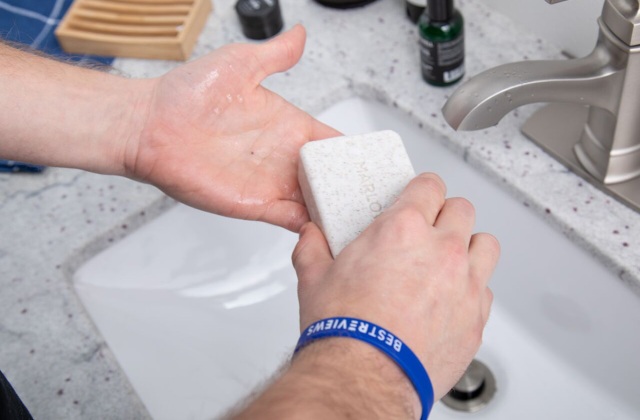What can the individual do, especially those who are underserved, to protect themselves against sexually transmitted infections, including chlamydia, gonorrhea, and syphilis, and complicated with monkeypox.
The rise of sexually transmitted infections (STIs) afflicts the United States creating a significant health crisis. This increase is within the most vulnerable and underserved populations.
Katherine Danaher, BSc Hons, research and development scientist at binx health, a Boston-based organization that is working on assisting the individual to take control of their health care decision-making, answered Infection Control Today®’s (ICT®’s) questions about the rise of STIs and how to diagnose and treat the infections before they worsen or spread to other individuals.
ICT®: A significant health crisis is plaguing the US, the rise of sexually transmitted infections (STIs), largely due to lack of education, testing, and diagnosis. Would you expand on that point?
Katherine Danaher, BSc Hons: Sexually transmitted infections (STIs) are increasing year on year, with preliminary data suggesting that in the US in 2021, there were around 2.5 million reported cases of 3 of the most common STIs: chlamydia, gonorrhea, and syphilis.1 The COVID-19 pandemic affected STI surveillance activities and is likely to have exacerbated this upwards trend, with a global breakdown of accessibility to health care.1
With the restabilizing of health care infrastructure post-pandemic, the population can be divided into 3 groups: those who do not get tested, those who are misdiagnosed, and those who do not follow through with treatment.
Accessibility to health care can be a large contributing factor to those not tested, irrespective of education. First, not all STIs are symptomatic; people often avoid being tested for these infections and may not even realize they carry them. Second, with all the best intentions, a symptomatic individual may also run a busy life, where a visit to a clinic and potential follow-up consultations may never feel like the right time. The above group may also fall into the category of those who are unlikely to attend follow-up appointments and treatment, again for the same reason.
For those who can make it to a clinic, the turnaround time between sample collection and patient results can be up to a week or more. This often leads to clinicians treating their patient’s symptoms empirically, to prevent further spread, by prescribing medication prior to the arrival of these results. This potentially inappropriate treatment may lead to antimicrobial resistance, an ever-growing problem in the world of infectious diseases. For instance, antimicrobial resistance has led to gonorrhea having in many cases only 1 effective treatment option left.2 Additionally, early misdiagnosis delays any investigation and appropriate treatment of the true infection present.
Overall, there are many points in the chain to effectively diagnose and treat STIs that can break down—and historically have—leading to the current STI epidemic we face.
ICT®: How is monkeypox increasing this situation?
KD: Monkeypox can be spread by skin-to-skin contact including transmission via sexual intercourse.3 Monkeypox can also present symptoms considered characteristic of other STIs, such as genital blisters and rashes.4 This can complicate diagnoses when based on symptoms, additionally sharing behavioral modes of transmission with STIs.
Despite their similarities, STIs and monkeypox require different immediate actions, with monkeypox requiring isolation prior to a health care visit, because of the wider scope of transmission.5 Accurate and reliable laboratory identification is therefore essential to distinguishing the causative microbe and selecting the most effective treatment for the patient.
ICT®: What is binx doing to alleviate this situation?
binx health is providing a catch-all approach to fighting the STI crisis currently faced by targeting the gaps in the chain to effective diagnosis and treatment.
binx everywhere is a physician-mediated digital platform that combines self-collection of samples and high-quality diagnostic testing performed by a network of third-party laboratory partners and clinicians. binx everywhere enables programs that distribute self-collection kits tailored to the individual’s needs, delivered straight to a patient to provide convenient and discreet self-collection. This method reaches those who cannot attend a physical clinic visit. These samples are sent to a reference laboratory, after which a clinician will review the result, and work with the patient using an online portal to deliver the most appropriate care.
Alternatively, the binx io is the first Food and Drug Administration-cleared, Clinical Laboratory Improvement Amendments (CLIA) -waived molecular point-of-care (POC) test for chlamydia and gonorrhea for males and females, delivering accurate results in 30 minutes. This enables same-visit test and treat, helping prevent misdiagnosis, inappropriate treatment, and address those who do not attend follow-up appointments. Being CLIA-waived, our instrument and the chlamydia and gonorrhea test cartridge can be operated in any establishment possessing a CLIA certificate of waiver, delivering an accurate laboratory-quality result from sample collection in a single patient visit. This removes the need to transport the sample to a reference laboratory, joining a long queue of incoming tests, before entering a long list of results for the clinician’s interpretation. With the binx io, in 1 visit, the patient can be rapidly tested, diagnosed, and correctly prescribed with the most appropriate treatment, empowering both the clinician and the patient.
Even if the patient tests negative for the infections tested, this rapid testing allows the clinician to re-assess the symptoms and seek the appropriate means of diagnosis and treatment. This prioritizes the patient’s needs and prevents further transmission, while combatting antimicrobial resistance that could arise from inappropriate treatment.
ICT®: Do you have anything you’d like to add?
KD: Conventionally, there has unfortunately been a stigma surrounding STIs. Improving both accessibility to testing and education, prevention, and treatment options available will help fight this, encouraging both conversation and routine screening. The harsh truth is that STIs are increasingly common, and therefore, transmission is increasingly likely also. If left untreated, these infections can cause serious implications, including susceptibility to other infections such as human immunodeficiency virus (HIV), and other outcomes such as infertility and pelvic pain.6
The multi-pronged approach provided by binx health aims to equip both the clinician and the patient with accurate and reliable information, how, where and when they need it. We listen to the needs of clinicians and patients to determine what tests they desire and research how best we can help make an impact.
We aim to help individuals seek care in the way they want to, as easily as possible, integrating access to high quality health care into their day-to-day lives, regardless of circumstance. It is only when this becomes the reality and norm, that a reduction in the STI crisis can be expected.
References
1. Centers for Disease Prevention and Control (CDC). Preliminary 2021 STD surveillance data. Published September 1, 2022. Accessed October 04, 2022. https://www.cdc.gov/std/statistics/2021/default.htm
2. WHO. Antimicrobial resistance. Accessed October 4, 2022. https://www.who.int/news-room/fact-sheets/detail/antimicrobial-resistance
3. CDC. Monkeypox in the US Centers for Disease Control and Prevention. Published October 04, 2022. Accessed October 04, 2022. https://www.cdc.gov/poxvirus/monkeypox/if-sick/transmission.html
4. CDC. Monkeypox in the US Centers for Disease Control and Prevention. Published October 04, 2022. Accessed October 04, 2022. https://www.cdc.gov/poxvirus/monkeypox/symptoms/index.html
5. CDC. What to do if you have monkeypox. Centers for Disease Control and Prevention. Published August 11, 2022. Accessed October 04, 2022. https://www.cdc.gov/poxvirus/monkeypox/if-sick/what-to-do.html
6. National Coalition of STD Directors. “Chlamydia, gonorrhoea & syphilis: STDs on the rise,” 06 February 2022. Online. Accessed 04 October 2022. https://www.ncsddc.org/wp-content/uploads/2018/09/STD-101_NCSD-STD-Handout-2.3.2020.Final_.pdf.
Discovered on: 2022-11-10 12:10:00
Source: Sexually Transmitted Infections Increasingly Plague the United States



